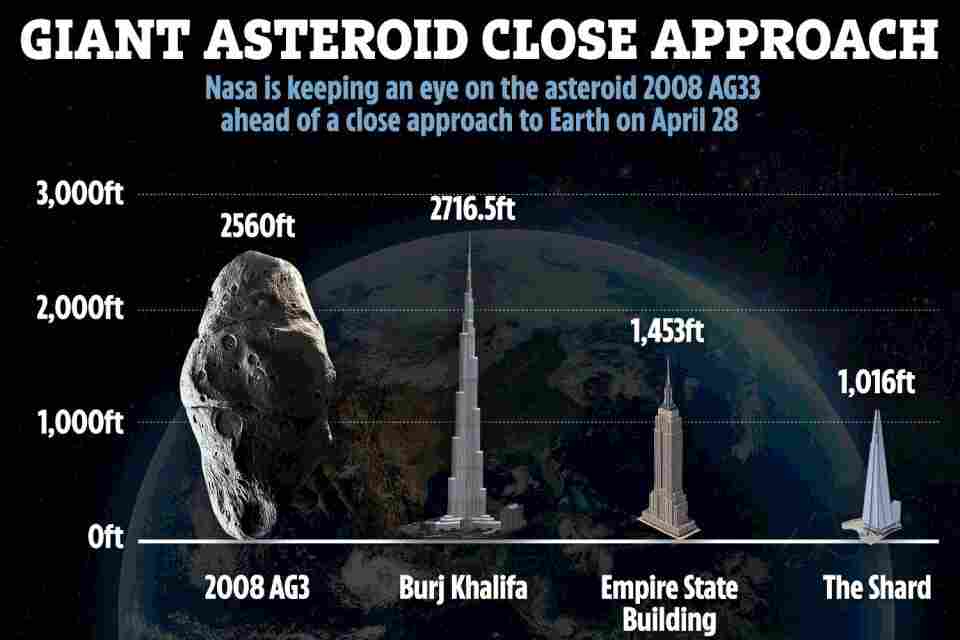Technology
Enormous ‘potentially hazardous’ asteroid to soar past Earth tomorrow – and it’s twice as big as Empire State Building

NASA is keeping a watchful eye on an asteroid that will make a knee-wobbling close pass of Earth on Thursday.
The space rock 2008 AG33 is up to 2,560 feet long, making it twice the size of the Empire State Building.
Luckily, it’s expected to scorch past at a safe distance and poses no threat to our planet.
The asteroid has been added to Nasa’s “Close Approaches” database, which tracks thousands of so-called near-Earth objects (NEOs).
According to Nasa’s Jet Propulsion Laboratory, the rock is travelling at 23,300 mph (37,400 km/h) – 13 times faster than a bullet.
It’ll zip within about two million miles (3.2 million kilometres) of Earth – a stone’s throw in space terms.
Read more about space
Any fast-moving object that comes within 4.65 million miles of us is considered “potentially hazardous” by cautious space organisations.
Thursday’s asteroid was discovered in January 2008, by asteroid surveyors at the Mt. Lemmon SkyCenter observatory in Arizona.
Its last pass of Earth was in March 2015. The asteroid passes our planet during its orbit of the Sun roughly once every seven years.
It’s one of the more than 2,000 asteroids, comets and other NEOs that are being tracked by experts 24/7.
Most read in News Tech
They’re monitored to provide us with an early warning should a space rock shift onto a collision course with our planet.
Earth hasn’t seen an asteroid of apocalyptic scale since the monster that wiped out the dinosaurs 66million years ago.
However, smaller ones capable of flattening an entire city crash into Earth every so often.
A rock a few hundred metres across devastated 800-square miles of forest near Tunguska in Siberia on June 30, 1908.
Fortunately, Nasa doesn’t believe any of the NEOs it keeps an eye on are on a collision course with our planet.
That could change in the coming months or years, however, as the space agency frequently revises objects’ predicted trajectories.
Astronomers could in future discover a gigantic rock that had previously alluded their telescopes, although Nasa believes it has found 90 per cent of potential planet killers in our vicinity.
“Nasa knows of no asteroid or comet currently on a collision course with Earth, so the probability of a major collision is quite small,” Nasa says.
“In fact, as best as we can tell, no large object is likely to strike the Earth any time in the next several hundred years.”
Read More on The Sun
Even if one were to hit our planet, the vast majority of asteroids would not wipe out life as we know it.
“Global catastrophes” are only triggered when objects larger than 900 metres across smash into Earth, according to Nasa.
Get all the latest Science newsKeep up-to-date with the top Space & Astronomy storiesAll the latest Archaelogy news from dinosaurs to Ancient artefacts
We pay for your stories! Do you have a story for The Sun Online Tech & Science team? Email us at tech@the-sun.co.uk

